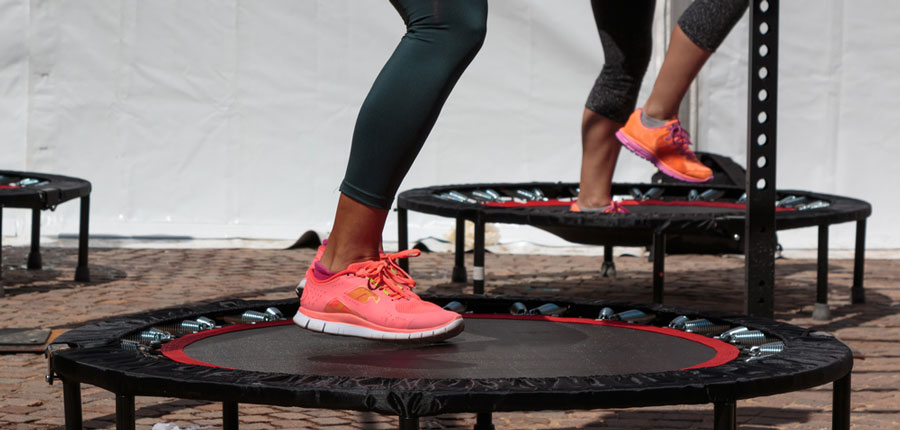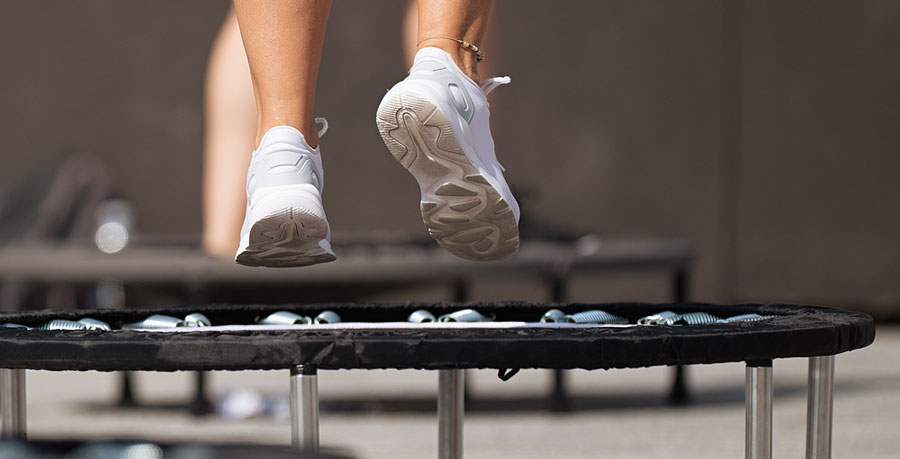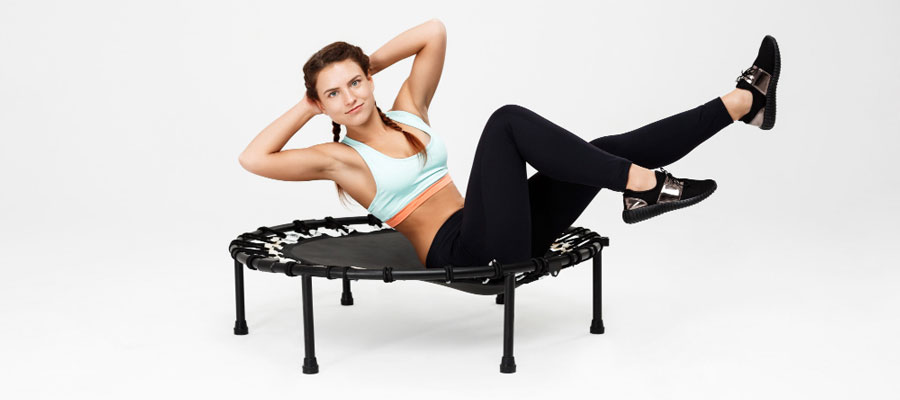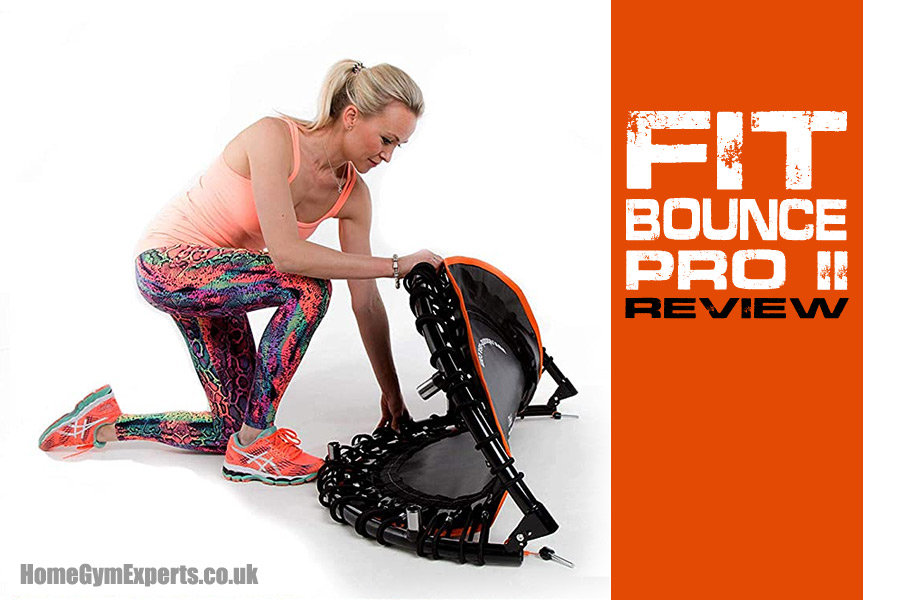
December is the season of indulgence. From the end-of-year office parties to the period of grazing that inevitably happens between Christmas Eve and New Year’s Day, December is not the time to diet. We advocate for balance in people’s approach to health and fitness, so we are not against throwing caution to the wind and tucking into the mince pies.
On the other hand, the New Year brings a dose of reality if you can no longer fit into your jeans. In this post, we are going to plan by looking at the benefits of rebounding for weight loss. Or, if you feel like doing something fun and active in December, rebounding for less weight gain!
Rebounding
Rebounding is a cardio exercise performed on a mini-trampoline. It involves fast and slow jumping, aerobic stepping and even Pilates-style moves. To get the most out of your workout, we recommend following an instructor (either through a YouTube video or by joining an online class) as they will direct you through the moves and keep you accountable.
The type of workout you will do will depend on your preferences and goals. Some people are happy to just move their bodies and have fun; this is a worthy aim in itself. If you have particular goals in mind though, know that rebounding is compatible with HIIT and Pilates and a standalone workout genre. Indeed, performing your usual exercise routine on a mini-trampoline is a sure way to challenge yourself and to keep things interesting.
Why rebounding?

Why are we focusing on rebounding in this post instead of other cardio exercises, like running, spinning, or cross-fit? Rebounding has a special quality that no other exercise can match (not one we have tried anyway) – it is FUN! A 30-minute rebounding session does not feel gruelling or burdensome, it is easy to forget that you are working out at all.
In saying this, it is a workout. A 30-minute session on a rebounder can see a 125lb person burn 295 calories, a 155lb person burn 360 calories and a 185lb person burns 420 calories. This puts rebounding on par with cycling or running at 6 mph. With such serious numbers, you might be wondering how long it will take you to lose weight through rebounding. This question very much depends on your starting weight, your goal weight and your diet. In the following section, we are going to look at Christmas weight gain as an example of what you can expect.
How long to lose weight?
Researchers have found that the average weight gain over Christmas is 1-2lbs (0.5-1kg), which is equivalent to 3,500-7,000 calories. This may surprise you as many people report gaining much more. However, unless you pig out for all of December, 1-2lbs is about right for true fat gain. If you gain more than this over the festive period, water weight is likely partially responsible. Our favourite Christmas foods are high in salt, which leads to water retention, as does the consumption of alcohol.
Assuming that you gain 1-2lbs, it will take you 5-12 hours of rebounding to burn it off, depending on your weight. Dieting alongside exercise is highly recommended (although, we strongly advise against crash diets). Cutting 250-500 calories from your daily intake will see you slim down without depriving yourself.
How to create a rebounding exercise program

We strongly recommend using YouTube to guide you through your rebounding workout. You will be able to find content to match your workout goals and your ability levels. However, if you want to freestyle your workout, then we have a handy structure that you might like to follow:
- 5-minute warm-up: gentle bouncing that gets steadily more intense. Roll the shoulders, perform squats, side stretches, arm circles etc. You aim to get the body limber.
- Choose 12 of the following for 1 minute 45 seconds with 15 seconds to break: side steps, jumping jacks, squats, deep squats, deep squats with mini-bounce on each squat, running foot-to-butt touches, simultaneous leg and arms open (separate set for each side), high knees, running high knees, twists, lunges, kick and jab (separate set for each side), quick steps, star position (arms and legs out-stretched) hand to foot touches, elbow to knee touches (separate set for each side), leg sidekicks with arm punches (separate set for each side) and – finally – marching (and fast marching!).
- Final minute: choose the move that most challenges you and give your final minute everything you have got.
During your 15 second break, jump freely instead of standing still. Active recoveries keep your heart rate up. Do not forget to cool down and stretch after your workout. You can do 24 moves for 45 seconds and 15 seconds of break if you prefer. You can also up the intensity by incorporating some light dumbbells.









